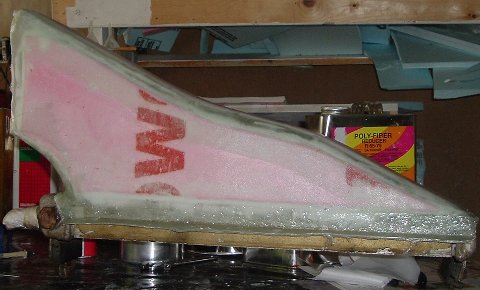|
|
Al Gietzen wrote:
The test purposes were somewhat limited. The main thing was the flow
distribution for the in-cowl radiator with the curved scoop. I measured the
flow coming through with a small hand-held anemometer. As expected, most of
the flow tended to go to the far end. I was able to determine the internal
baffling necessary to get a fairly even flow distribution over the core
area.
Other then that I could measure the pressure drop through the cores (simple
water manometer) to verify they were as expected. No heat transfer test was
involved.
Al (Notice - plain text so as not to offend your storage size sensibilities
:)
That is a very good test. This is the duct I put together for my oil cooler while I was waiting for paint to dry. Someone was asking that I scan the pages I have from K&W's book a while back. I don't have a scanner set up, but this should convey what they recommend.
The top leaves the right side at an angle 64 degrees from vertical. Once the top reaches a height of 44% the length of the cooler, the inlet tapers down to 30% the cooler's length. I believe it was John Mellencamp who said, "This is the best that I could do" ?
--
This is by far the hardest lesson about freedom. It goes against
instinct, and morality, to just sit back and watch people make
mistakes. We want to help them, which means control them and their
decisions, but in doing so we actually hurt them (and ourselves)."

OilCoolerInletDuct.jpg
|
|